As part of my Bachelor-Thesis, I'm trying to implement a corner detector with the Harris and Stephens algorithm: A combined Corner and Edge Detector
I do calculate:
- The x- and y- deviations with sobel Filters (3x3)
Calculate the system Matrix M
M = [A C; C B]
which means, if I got all right:
- A = Response of sobel_x squared: Ix * Ix (at certain pixel)
- B = Response of sobel_y squared: Iy * Iy (at certain pixel)
- C = Response of sobel_x multiplied by response of sobel_y: Ix * Iy (at certain pixel)
now I do calculate trace(M) and what I'm especially more concerned: determinant(M)
In there paper they suggest the following approximation for the determinant, as it avoids expensive calculation of the eigenvalues:
det(M) = A * B - C^2
This must always terminates in Zero!
The expression det(M) = A * B - C^2 can be rewritten as: (using the knowledge of point 2)
det(M) = A * B - C * C
det(M) = Ix*Ix * Iy*Iy - Ix*Iy * Ix*Iy
det(M) = Ix*Ix * Iy*Iy - Ix*Ix * Iy*Iy
det(M) = 0
So why should I even bother calculating the determinant? As far as I see, it is sufficent to calculate the trace! (Or did I make somewhere a major mistake?)

